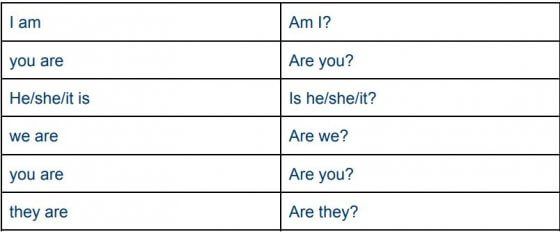Simple Present Exercise: Sentences and Questions
The Simple Present is the most basic and fundamental verb tense you need to learn in English. It is the tense that enables us to give basic information about ourselves, express desires and share opinions. And for basic survival in English it is the one thing you need to know, which is why we focus a lot of attention on the Simple Present during the first levels of our course at Wall Street English. Here is a detailed look at how to form the Simple Present and when to use it, with lots of examples.
How do we form the Simple Present?
Forming the Simple Present in English is quite easy because, with the exception of the verb ‘to be’, all verbs only have two forms. For example, for the verb ‘to look’ we use the base word ‘look’ in the following way:

As you can see, the only difference is for the third person singular (he/she/it) to which we add -s. This -s for the third person singular can also be written as -es, and in this case the pronunciation changes a little:

To make the negative form we add don’t and doesn’t:

And to make the question form we add do or does:

When do we use the Simple Present?
The Simple Present has a lot of different uses, all of which you will study gradually during your course. Here is an overview of each use with examples.
a. to describe long-term situations
- We live in Boston.
- He works for the Post Office.
- Do they have any children?
- She manages the marketing department.
b. to describe permanent facts
- Bees make honey.
- Water boils at 100°C.
- Mount Everest is the highest mountain in the world.
- We use trees to make paper.
c. to describe your routine and habits
- You go swimming twice a week.
- I don’t often play video games.
- Does she work every Saturday?
- We sometimes eat out on Sunday evenings.
d. to describe your preferences and opinions
- We love going to concerts.
- He thinks living here is too expensive and I agree.
- They believe in their leader and trust him completely.
- I like reading, especially historical novels.
e. to refer to the future for the times of transport, meetings or events
- Our train leaves at 3pm.
- The match starts at 8:30pm.
- When does the meeting begin?
- We land in Dusseldorf at 9:15.
f. with time expressions like when, before, after, and until
- We’ll start when the other guests arrive.
- You can send the goods after we receive the payment.
- I can’t leave until I finish this project.
- Before we leave let’s check we have everything we need.
Making Questions in the Simple Present
English is one of the few languages in the world that adds a word (do or does) to make questions. And as a student you need to practice as much as you can to remember to use it. When we use question words, like where, when, what, etc, these words go before do/does:

Here are some examples:
- Where do you work?
- What does he do?
- How do they come here?
- When do we start?
- Why do they play football so late?
- What does she like doing at the weekend?
- Where do you go to the cinema?
- When do we leave?
How does Hans get to the office?Remember that we use do/does for all verbs except the verb ‘to be’. To make questions with ‘to be’ we invert the subject and the verb:

For example:
- Are you well?
- Where are the kids?
- What time is it?
- Is Shona sick?
- Am I late?
- When is the lesson?
- Why are we here?
Here’s a dialogue that includes several examples of the Simple Present:
- “Hi! Are you new here?”
- “Yes I am.”
- “What do you do?”
- “I work in the accounts department. What about you?”
- “I supervise the customer service department. We deal with phone calls and emails.”
- “Do you get a lot of calls?”
- “Yes. Most customers prefer to speak to someone to solve the issue quickly.”
- “And where do you live? Near here?”
- “Yes, just 10 minutes away. I usually come on foot. And you?”
- “I live outside the city and take the train every day.”
- “Are the trains usually on time?”
- “They’re not bad, they sometimes have a short delay.”
- “Listen, do you play football? Our company tournament starts next week if you’re interested in taking part.”
- “Yes, I love football and I’d love to play! Thanks!”
So now you’ve seen when and how to use the Simple Present, you’re ready to use it yourself in everyday situations. The most important thing to remember is to add the -s in the third person singular because it’s strangely easy to forget but it’s also very noticeable if you do. Take the time to learn and practice using it now and you’ll start to become a really good speaker of English!
The present perfect is a tense that usually describes something about the past that has a connection with the present. Read on to find out more.
The past perfect simple is used to refer to something more in the past than another action or situation. Read on to find out more!